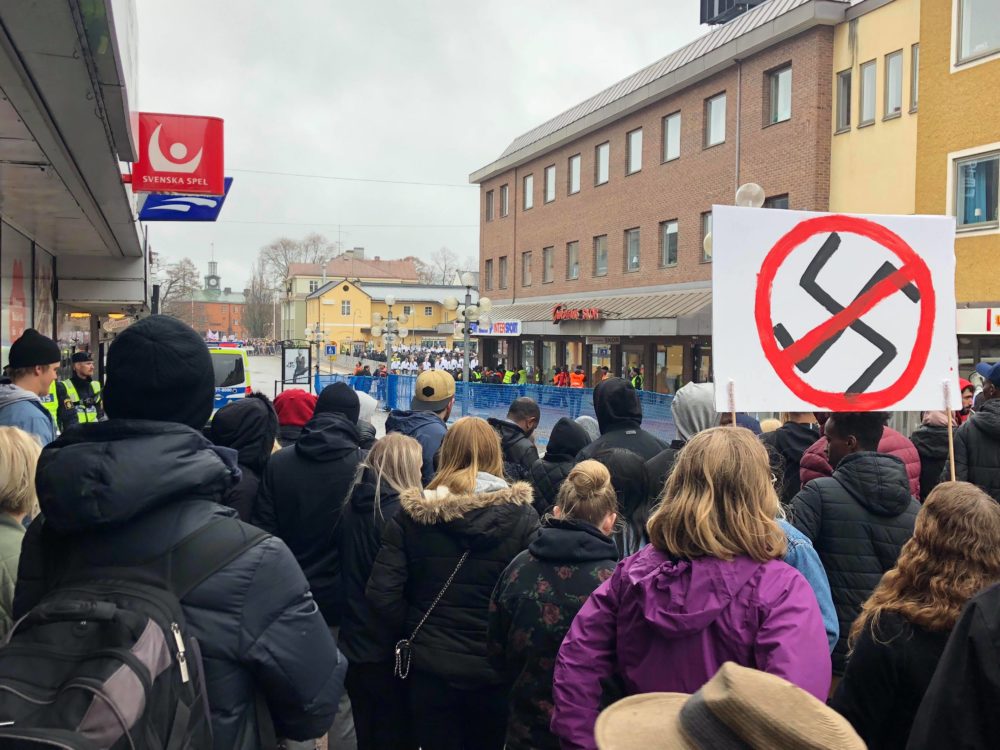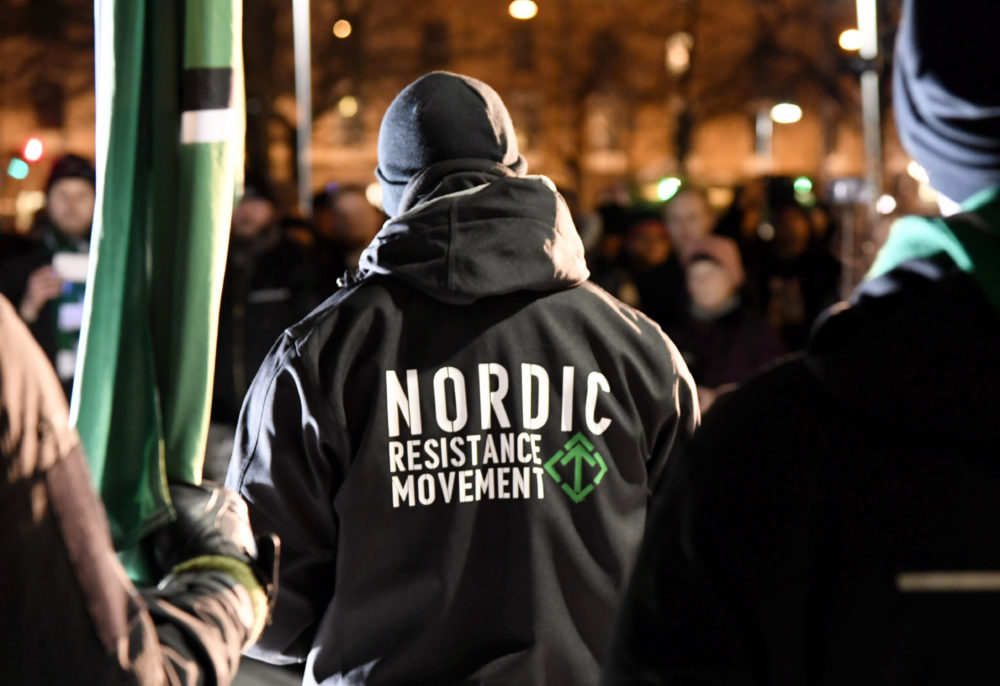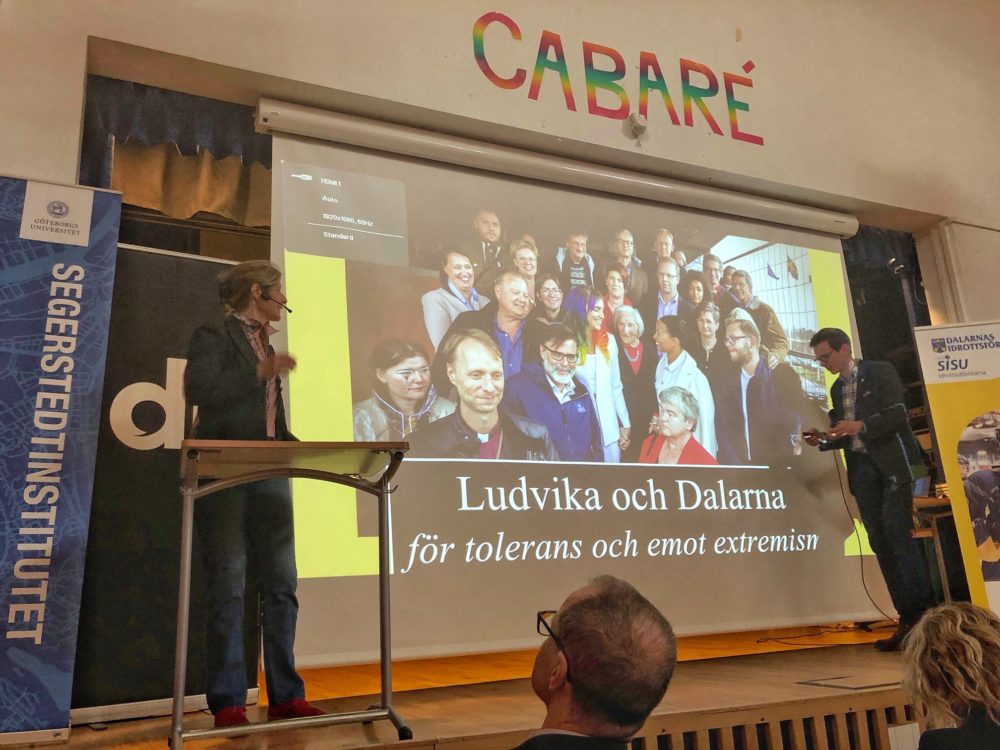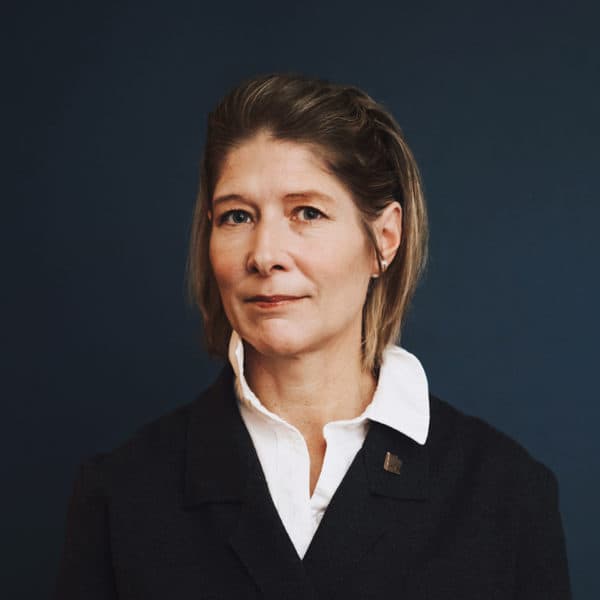Advertisement
Commentary
How One City In Sweden Fought Back Against White Supremacy

These days it sometimes feels like we are on a train speeding toward a chasm where the bridge has collapsed. In better times, the brakes on the train are our ability to organize ourselves around reasoned compromise and our willingness to come together when basic moral norms have been violated. But the brakes don’t seem to work anymore.
This feeling is present in many communities across the Western world and gives rise, not only to sentiments of helplessness and resignation, but also the insane idea that anyone who attempts to alter the course of this train’s inevitable fate, is somehow upsetting things or even offending people.
Last year, I was invited to work in central Sweden on what seemed like one such intractable situation. Neo-Nazis were terrorizing a municipality called Ludvika and other areas in the region of Dalarna, to the extent that people and businesses were preparing to move out.
In Sweden the far right began to re-mobilize in 1988, following a diffuse history in the country. The influx of immigrants from the Balkan Wars in the 1990s served as a rallying point, and though attempts to become a political force failed, the emergence of the alt-right as a global phenomenon facilitated by the internet fueled Sweden's far right. Since 2010, the rise of the Sweden Democrats, an anti-immigrant party with roots in the neo-Nazi movement, gave rise to an environment in which white supremacists felt encouraged to emerge. In autumn 2015, when 114,000 refugees arrived, mainly from war-torn Syria, the reaction by some members of the public provided new opportunities for recruitment.

In contrast to their past haphazard hooliganism, this time the neo-Nazi groups took a page out of the history books. Like the Nazi Party after Hitler’s brief imprisonment in the 1920s, it sought a political path. The Nordic Resistance Movement (NMR), an outright neo-Nazi party, created a structure based on research of the law, training and dissemination of publications, and eventually hijacked two seats in local city councils.
By the end of 2016 the monitoring foundation EXPO reported over 3,000 activities by the radical wing of the extreme right in Sweden. On May 1st of that year street violence broke out in the city of Borlänge, Dalarna and it felt eerily like 1929 all over again. The political editor of Dalarna’s regional newspaper described how he was shocked to see hundreds of men marching for hatred in their streets. The NMR more than doubled their numbers nationally to well over 500 members, and began to disrupt the city of Ludvika.
On May 1, 2018 the NMR marched through the streets of Ludvika protected from counter-protesters by police on horseback. Some said that their need for police protection was a sign of their weakness, but history tells us that without concerted opposition by existing institutions, such movements can quickly grow stronger in times of fear, insecurity and rapid change like the one we are currently living through. Moreover, this time they were supported by a global ecosystem of resurgent white supremacism. The city of Ludvika felt “under siege.”
I went to this embattled town for the first time in the autumn of 2018, before the national elections in which the NMR campaigned for the first time. I was there with other national experts, activists and politicians to facilitate local discussions about solutions and to inspire resolve and hope. During a workshop, I met a man, a local government official from the area, who wept because he was afraid to pick up his children from school. The neo-Nazis infiltrated the school yard during recess. At night they stalked families they saw as their worst opponents by shining car headlights into the children’s bedrooms so they could not sleep. They stood outside the local shops, voicing their hatred and intimidating people who attempted to enter and leave.
Advertisement
The activists I traveled with to Ludvika, an informal group consisting of Holocaust survivors and professionals with diverse skills, anticipated that to turn this situation around would take five to 10 years. Several of us wondered whether it would be too late.
It was the Holocaust survivors among the group who refused to fall into the trap of this fatalistic attitude. “I am not afraid,” said one of them, and offered to hold a first meeting with any citizens of the municipality who wanted to mobilize against the neo-Nazis.
Together, the citizens of Ludvika ... disempowered the neo-Nazis and changed the perception of their city ... to a place united behind democracy and human rights
Some residents were hesitant about turning up, poisoned by that lethal mix of fear and resignation. But fortunately, among the participants who dared to attend, there were representatives of the municipality’s long-standing institutions: church, school, sports associations, local government and business. Large companies, including ABB and Spendrups, agreed to support preventive initiatives. The Segerstedt Institute, which has substantial experience of successfully counteracting extremism, joined the mix. And the government sent the Minister of Democracy to demonstrate that the local situation was a national concern.
The young political editor of the regional newspaper, “Dalarnas Tidningar” – the same one who had once been shocked by the sight of hatred on the march — volunteered to coordinate the effort. The newspaper itself became the focal point for bringing in national organizations, including those with experience in countering white supremacism, both to shine the spotlight on this municipality and to provide needed outside expertise. The newspaper learned that if it truly wanted to be a part of this turnaround, it would also need to resist giving the Neo-Nazis undue media focus.
On May 1 of this year, three years after neo-Nazis had first marched through the streets of Dalarna, I addressed almost 200 of Ludvika's citizens at the school, and later that day, 400 of its citizens in the church. I told them that I was proud to stand with them on the front lines of democracy.

My own story of discovering my grandparents’ role in the Third Reich, and the reverberations of their fateful engagement in the SS through the generations, served as an energy battery for the continuation of local efforts. Together, the citizens of Ludvika had not only disempowered the neo-Nazis and changed the perception of their city as a place divided to a place united behind democracy and human rights, they had also taken the first steps to addressing the disenchantment and isolation that often fuels populist anti-immigrant resentment. The neo-Nazis are still there, but they will not determine the fate of Ludvika. The city is no longer under siege.
On the same day of my visit, the school principal mentioned that the local neo-Nazi leader had contacted him to ask whether his child, who would soon be starting school, would be treated equally with all of the other children. “Of course,” he replied. “We don’t exclude anyone here. We treat everyone equally.”
